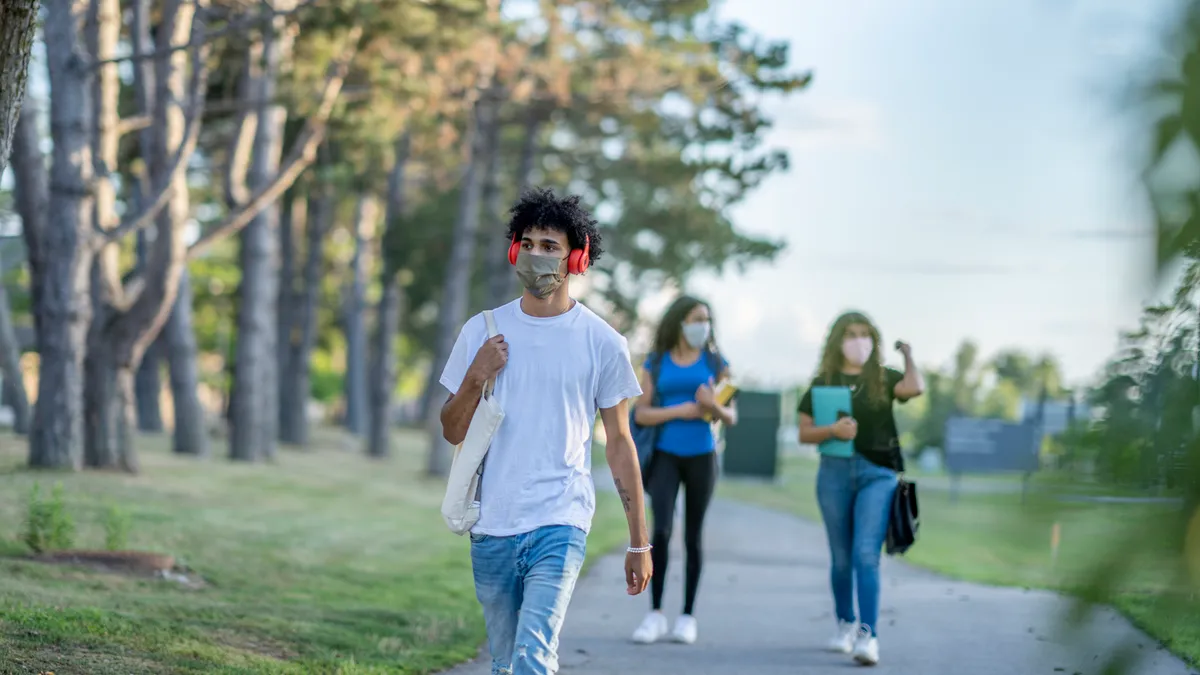Dive Brief:
-
Nine dual-enrollment programs that have strong outcomes for underrepresented students of color offer lessons to other community colleges hoping to achieve the same, according to a new report from The Aspen Institute and the Community College Research Center (CCRC).
-
Researchers found common elements among the programs, including that they evaluate equity gaps and set goals to close them, advertise to communities of color and proactively support struggling students.
-
The report's takeaways may be especially relevant during the pandemic, which threatens to expand equity gaps in higher education and diminish community college enrollment.
Dive Insight:
Dual-enrollment often allows high school students to earn college credit by taking community college classes. Participation rates have steadily increased over the past decade, but many programs struggle with equity gaps.
The pandemic has sharpened the focus on these issues, as repeated studies find students of color are struggling more during the crisis than their White peers. It has also underscored the role of dual-enrollment, which is the only enrollment type at community colleges that didn't drop this fall, according to a preliminary report from the National Student Clearinghouse Research Center.
The new report highlights strategies used by nine community colleges across three states — Florida, Ohio and Washington — that enroll high shares of underrepresented students and have strong outcomes for these learners.
Targeted recruitment can help close equity gaps. Colleges can distribute documents in different languages, as well as reach out to organizations families trust, including churches and local NAACP chapters.
The pandemic could complicate those efforts, said Davis Jenkins, senior research scholar at CCRC and one of the report's authors. "I'm afraid it's going to exacerbate inequalities precisely because it's all about connecting with students and developing relationships," he said.
Community colleges can enroll more of these students by working with local school districts to bus them to campus for dual-enrollment programs and by preparing them for placement tests, the report also notes. It calls out Valencia College, in Florida, for using that and other tactics at four high schools that had relatively low rates of dual-enrollment participation for students of color.
Expanding dual-enrollment partnerships to these types of high schools is key, said John Fink, senior research associate at CCRC and another author of the report. "We have these gaps in access at the student level, but there's also gaps at the school level," he added.
The researchers also recommend colleges set clear goals for dual-enrollment programs, such as increasing the region's college-going rate or advancing economic mobility for students.
Lorain County Community College, in Ohio, made dual-enrollment a pillar of its plan to have 10,000 students earn a degree or credential by 2025. And through its MyUniversity program, high school students can graduate with associate degrees that map into nearly three dozen bachelor's programs at colleges and universities in the state.
Picking pathways early can help students link their coursework to future careers, the researchers note. Pierce College, in Washington, has likewise organized its offerings into six career pathways, such as business and STEM, to help students ensure they're taking classes that will transfer.















